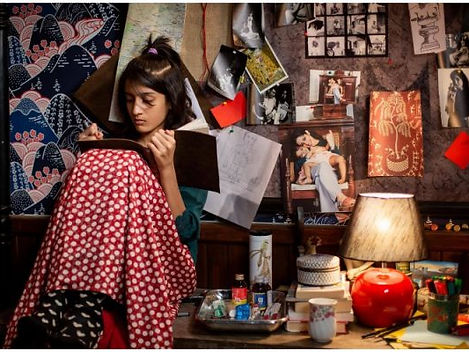India has a rich history of films featuring child actors, with many memorable performances that have won the hearts of audiences. From classics like “Anjali” and “Mr. India” to recent hits like “Secret Superstar” and “Dangal,” child actors have played an integral role in Indian cinema.

However, there have been instances where the treatment of child actors has been a cause for concern, leading to legal controversy. Sometimes, filmmakers face legal issues regarding portraying a child artist in a movie (intentionally/unintentionally). In 2020, the Netflix series “Bombay Begum” came under fire for its depiction of a child character in a sexualized manner. The show faced widespread criticism for portraying child artists, leading to a public outcry and calling for legal action against the producers. The controversy highlighted the need for stricter regulations and guidelines for treating child actors in India.

Besides, there is complexity regarding the enforceability of a contract signed with a child artist as a minor does not have the capacity to contract Under the Indian Contract Act 1872. This article will discuss the legal points filmmakers should consider while working with child actors in India. The employment of child actors is governed by the Child Labour (Prohibition and Regulation) Act 1986, which aims to prevent the exploitation of children in the workplace. Under the Act, children under the age of 14 are prohibited from working in any occupation except for work in the family business or the entertainment industry. Additionally, the Act mandates that child actors are only allowed to work a maximum of six hours a day, and a parent or guardian must accompany them on set.
A filmmaker must be meticulous while portraying a child in a film. A filmmaker must note that a child artist cannot legally be shown in sexually explicit movie content. Such content would be considered child sexual abuse and illegal under the Protection of Children from Sexual Offences (POCSO) Act, 2012. The POCSO Act defines a child as anyone below the age of 18 years. It prohibits any form of sexual assault or exploitation of children, including through the production, possession, and distribution of child pornography. Any person violating the POCSO Act’s provisions can be punished with imprisonment and a fine.
If your movie is based on child abuse/sexual abuse (e.g., Movie Highway), it is a sensitive and challenging task to picturise such a scene, and due care must be taken to ensure that such scenes violate any law/regulation. We must analyze each case from a legal perspective to give a specific legal opinion. However, certain guidelines and best practices can be followed to depict such scenes without violating any laws. A filmmaker should do the following needful;
a) Consult with experts: It is essential to consult with experts, such as legal experts, child psychologists, or social workers specializing in child abuse, to ensure that the scene is portrayed accurately and responsibly and all regulations have been followed.
b) Avoid graphic scenes: While it is important to show the severity of child abuse, it is essential to avoid graphic or explicit scenes that can be triggering or traumatic for viewers.
c) Use appropriate language: The use of language can significantly impact how a scene is perceived. It is essential to use appropriate language that does not trivialize or minimize the severity of the abuse.
d) Provide context: Depicting a child abuse scene without proper context can be misleading and reinforce negative stereotypes. Providing context and backstory can help viewers understand the root causes of child abuse and its impact on the child.
e) Include resources/references: At the end of the movie, include resources such as helplines or organizations that support and assist child abuse victims.
f) Obtain consent: If the movie is based on a real-life incident, obtaining the individuals’ permission is essential, especially if their identities are being revealed.

In the previous segment, we discussed the legal part. Let us understand the contractual aspect of dealing with a child artist. As child actors are minors, any contract signed on their behalf may be void under Indian law. To be legally binding, the agreement must be signed by the child actor’s parent or guardian and must comply with the provisions of the Child Labour (Prohibition and Regulation) Act 1986. It would be best if you took the legal opinion to ascertain the legal guardian of a child based on their law.
Besides, while working with child actors, it is essential to have a comprehensive contract that outlines the terms and conditions of their employment. The agreement must include the following provisions, among other things:
a) The duration of the project and the number of hours the child actor will be required to work per day;
b) The child actor’s compensation for their work, including any bonuses or incentives;
c) Provisions for the child actor’s education and welfare, including time off for school and access to appropriate facilities;
d) The working conditions are on set, including provisions for safety and security;
e) The role of the parent or guardian on set, including their responsibilities and any compensation they will receive.
In sum, filmmakers need to follow strict guidelines and regulations to ensure the fair treatment of child actors on set and avoid any legal complications. The Ministry of Labour and Employment has issued guidelines for the employment of children in the entertainment industry, which include provisions for working hours, education, and welfare. Filmmakers should also consider hiring a child welfare officer to oversee the well-being of child actors on set and ensure that their rights are protected.
In conclusion, working with child actors in India requires filmmakers to know the legal framework governing their employment. By following strict guidelines and regulations and ensuring that comprehensive contracts are in place, filmmakers can ensure that child actors are treated fairly and that their rights are protected. There are no legal complications for filmmakers.
Need specific legal consultation? Please consult us attorneyforcreators@gmail.com
*All the images are for representational purposes and are the copyright of respective owners.







